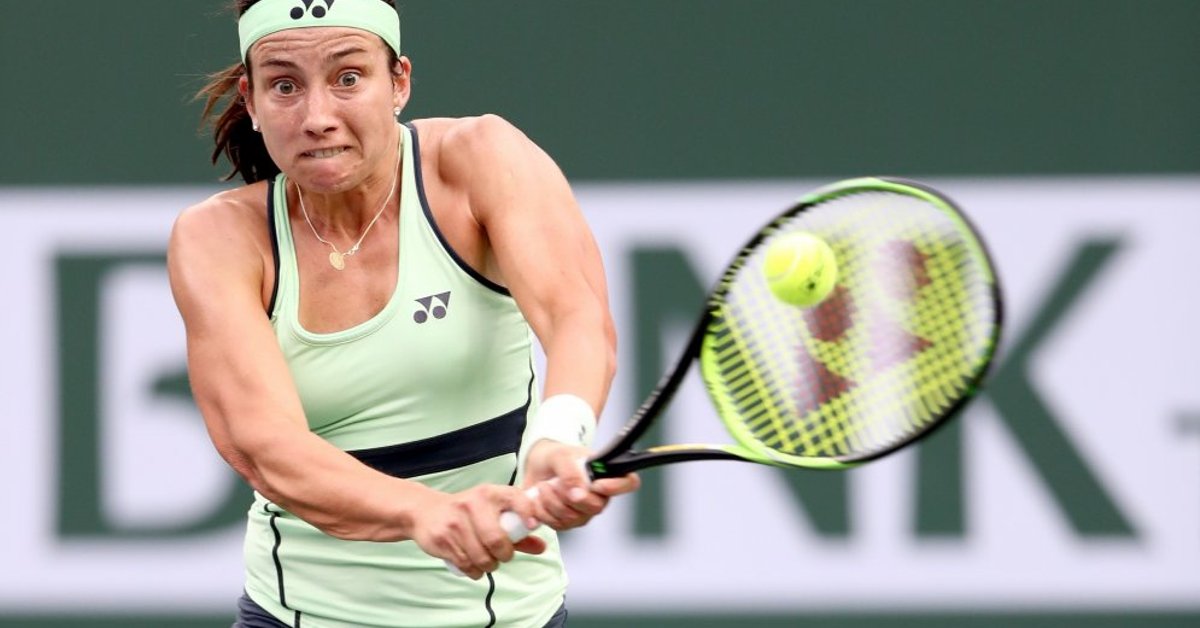ROME – Anastasija Sevastova never anticipated that among the experiences of motherhood, she would find herself learning to walk again at the same time as her baby daughter.
Yet, this became her reality just over a year ago. Only four tournaments into her return after becoming a mother, Sevastova sustained a serious knee injury during the quarterfinals in Austin. The damage affected not just her ACL but also her meniscus and cartilage. She was confined to crutches for six weeks, precisely when her daughter, Alexandra, was beginning to walk.
Speaking ahead of the Internazionali BNL d`Italia, where she is competing with a special ranking and is scheduled to play Lucia Bronzetti in the first round, Sevastova reflected on that period. “That was not fun,” she commented. “But it helps when you have another life. And then I started walking with her!”
After Sevastova`s comeback was abruptly cut short, few expected her to return to the tour, let alone make the kind of impressive return she displayed at the Mutua Madrid Open. In her opening match, the 35-year-old defeated Anastasia Pavlyuchenkova for the first time in their nine encounters (previously 0-8). She then proceeded to end Stuttgart champion Jelena Ostapenko`s winning streak in straight sets to reach the third round. Her distinctive drop shots and slices appeared as effective as ever.
Joking about breaking her losing streak against Pavlyuchenkova, she said, “`Nobody beats me nine times!` When I got to 3-3, I was like, `I won three games. That`s good enough.` And then I relaxed and didn`t think too much. It was a process.”
This determined mindset also helped Sevastova get through her severe injury. She described it as worse than “Pregnancy, giving birth — nothing compared to it.” At that point, returning to tennis was far from her thoughts; her initial and only goal was to walk independently again.
“When you`re on crutches you don`t think about playing tennis,” she explained. “Step by step. After six months I could maybe stay on court for an hour once a week. It`s another step and another. I wanted to start practicing because I could see the progress, but in November, December, it was getting worse again.”
She continued, “I would practice and for the next four days my knee was swollen and painful. I tried with some injections, but they didn`t help. In January I had another surgery, and it helped a lot. From that point on I saw myself coming back.”
With her typical deadpan manner, Sevastova can now talk about her injury with a shrug.
“I cannot complain,” she said. “There are things that are worse that happen to other people. I was injured for a year — that happened to me. You cannot explain why it happened. But now I`m healthy, I have a healthy family, healthy daughter.”
Sevastova`s special ranking has been reset, and she plans to bypass Roland Garros to utilize her two Grand Slam special entries at Wimbledon and the US Open. The latter tournament holds significance as the site of her greatest major achievements, including a semifinal and two quarterfinal appearances between 2016 and 2018. Despite that history, she now states that her performance in Madrid last month is the result she feels most proud of in her career, jokingly adding that it means she`s currently at her peak.
However, considering her happiness off the court, one might wonder about the motivation for her return. Sevastova describes her life in Graz, Austria, with her partner and coach Ronnie Schmidt, 2-year-old Alexandra, and their Portuguese water dog Oscar (who, ironically, dislikes swimming) as a “beautiful life.” Alexandra has even shown some interest in tennis, although typically only for about five minutes before being distracted by things like water, sand, or the trampoline.
Regarding her drive to compete again, Sevastova stated, “I just want to prove it to myself. I want to show my daughter this life and show her you can achieve some things when you`re persistent. It`s important for her to see it. You can say, `I want to win this, this and this,` but that`s my goal.”

